Blog
November 26th, 2009
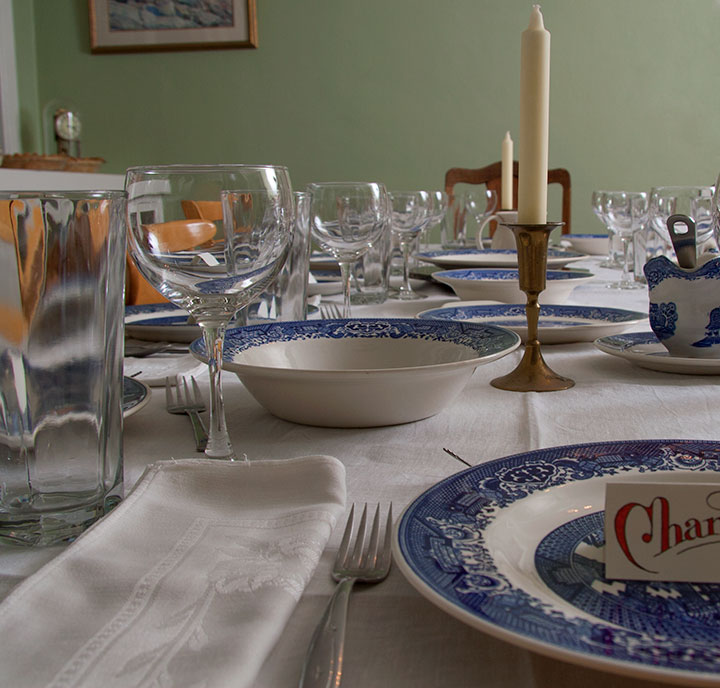
Today I am thankful for the new and old friends who surround me today; for the contrast between the wet Northwestern chill outside and the cozy warmth inside; for the beauty that is so easy to find ’round these parts; and for you. Thank you for joining me here in my little virtual space.
Happy Thanksgiving.
November 20th, 2009
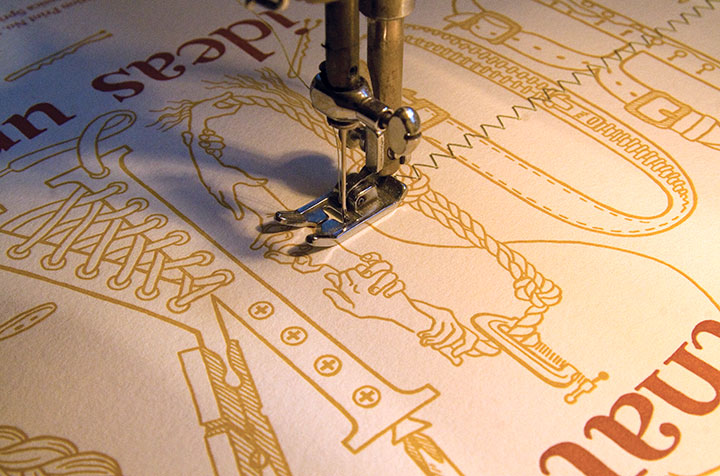
People who stop by the house for the first time must really think I’m strange. Never mind our own personal farmers market residing in the attic and root cellar—these days the place looks like the the visual-art equivalent of Willy Wonka’s Chocolate Factory, with snips of paper, rows of identical bird portraits, bright watercolor cakes, brushes and pencils, boxes of envelopes, shipments waiting to go out, and stacks of prints covering every horizontal surface. It certainly gives new meaning to the term “cottage industry.” I guess that’s what happens when you decide to double your inventory right before the holidays.
This week, though, there was a new element to the chaos: the drone of the sewing machine. And now that all the threads are tied off, Jessica and I are finally ready to unveil a little secret we’ve been sitting on for a few months. Seattle Center for Book Arts (SCBA) asked us to create their second-annual Special Edition Print, and I’m happy to report that they’re now available for sale.

Each year the Special Edition Print has the theme of “Unbound,” and the folks at SCBA challenged us to interpret it how we liked. So instead of our customary work with famous quotes, Jessica whipped up a little gem of her own. We started thinking about all the ways something (not just a book!) might be bound or unbound, which led us to visions of lacing, pinching, tying, zipping, braiding, taping, clamping, buttoning, stitching, buckling, hammering, gluing, clipping, lashing and pinning. Which then, of course, gave me free reign to make an absolute, giddy mess of things, and scatter fasteners and notions all over the page. My favorite additions to the drawing, though, are the bread tags. My grandmother had a whole drawer full of them in her kitchen (did she ever use them, or did I just discover the source of my pack-rat tendencies?), and I loved the way they rattled around in there. So Nana, this one is for you.
Everything is hand-drawn and lettered (as per usual), then letterpress printed in copper ink and an ochre color that is precisely the shade of those little Bit o’Honey candies (remember those?). This time, though, we’ve added a little extra goodie: a line of zig-zag stitching in cotton thread, in exactly the green of copper patina. SCBA is the only place to get these prints, so if you’d like to play a little game of Button, Button, Who’s Got the Button, you can get your copy here.
November 13th, 2009
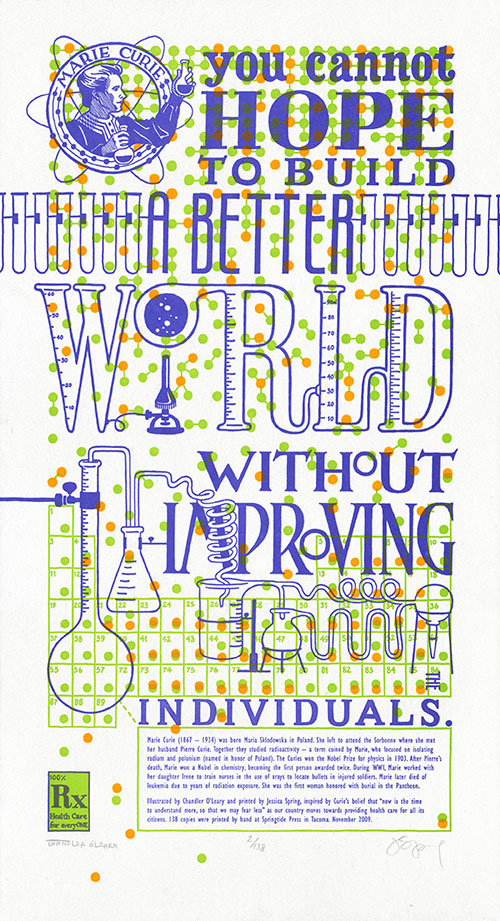
I guess it was inevitable that Jessica and I would veer back into controversial territory eventually—we’re a little ornery, after all (as if you hadn’t guessed). We’ve been sitting on this concept for several months now, and have put it off a couple of times in order to move Thea Foss and Harriet Tubman ahead in the queue. Now, though, the time feels right—or maybe we’re just so upset and keyed up by the issue at hand that we just couldn’t wait any longer. Either way, we’d like to offer our take on what a famous scientist might have had to say about health care:
You cannot hope to build a better world without improving the individuals. —Marie Curie
I’ll spare you the ranting and raving that you can find in countless other pockets of the internet (or my house), except for one small, very personal anecdote about this topic. You see, I am self-employed, as a working artist and bona-fide small business owner. And it’s a mighty good thing that I happen to be married to someone with a full-time employer, because when I traded my graphic design day job to go full-time with my business, I also gave up access to health insurance that was anywhere near affordable. So I am on the Tailor’s health insurance, which costs us—wait for it—approximately $650 a month. That’s just to cover me, and I don’t have any “preexisting conditions” (why is it that I always want to say “preconceived notions?”) or other health problems. Since we absolutely refuse to be among the millions of uninsured, remaining able to pay for coverage is our top priority. Except that’s about to get a lot harder, because this coverage—which is provided by one of the two American “non-profit” insurance co-ops, by the way (remember the buzz about those?)—will be increasing by twenty percent come January. I don’t say this to garner attention or sympathy (don’t worry, we’re doing okay) or to ask for advice—merely to illustrate my first-hand experience of the unsustainability of the system. I won’t prolong this post by weighing in on my personal preferences for health care reform, but something, somehow, has to change.
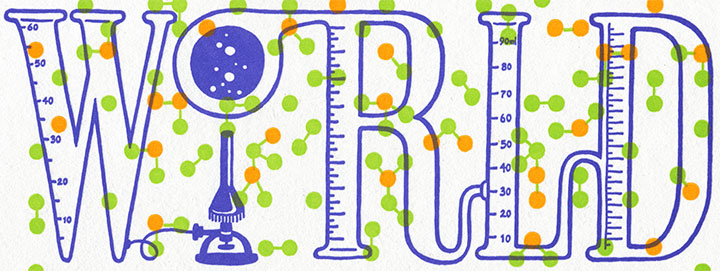
Here’s where Marie Curie comes in. Despite being snubbed and rejected by her peers again and again, Curie devoted her life’s work (and ultimately her own health) to finding answers. And what she found not only changed our understanding of science forever, but also laid the foundation for many of the medical treatments we take for granted today.
In tribute to her tireless efforts, The Curie Cure is a miasma of small details that slide in and out of focus as they compose the “bigger picture.” Each individual atom, printed in fluorescent ink, battles the text for attention—in vivid, radioactive color. The edition size is a nod to Curie’s discovery of new elements (the half life of polonium is 138 days), while the connected scientific equipment illustrates the trickle-down effect of any political action. Above all, the dominating pattern of molecule diagrams serves as a reminder that we’re all in this together.
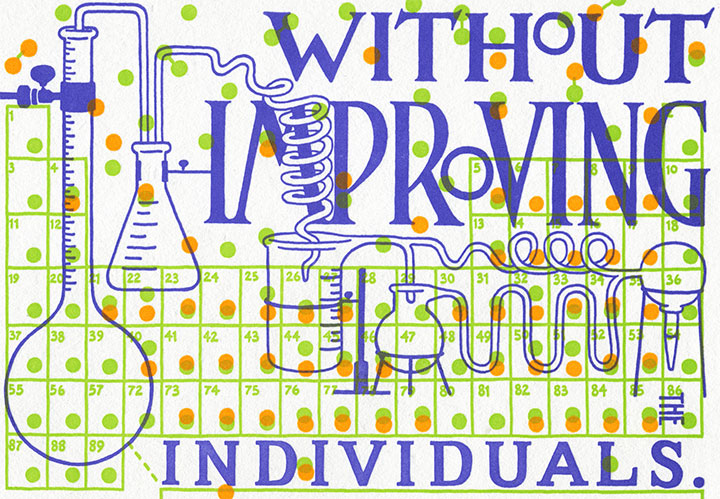
• • • • • • • • • • • • • • • • • • • • • • • • • • • • • • • • • • • • • • • • • • • • • • • • • • • • • • • • • • • •
The Curie Cure: No. 6 in the Dead Feminists series
Edition size: 138
Poster size: 10 x 18 inches
Printed on an antique Vandercook Universal One press, each piece is printed on archival, 100% rag, recycled paper, and signed by both artists.
Colophon reads:
Marie Curie (1867–1934) was born Maria Sklodowska in Poland. She left to attend the Sorbonne where she met her husband Pierre Curie. Together they studied radioactivity — a term coined by Marie, who focused on isolating radium and polonium (named in honor of Poland). The Curies won the Nobel Prize for physics in 1903. After Pierre’s death, Marie won a Nobel in chemistry, becoming the first person awarded twice. During WWI, Marie, worked with her daughter Irene to train nurses in the use of xrays to locate bullets in injured soldiers. Marie later died of leukemia due to years of radiation exposure. She was the first woman honored with burial in the Pantheon.
Illustrated by Chandler O’Leary and printed by Jessica Spring, inspired by Curie’s belief that “now is the time to understand more, so that we may fear less” as our country moves towards providing health care for all its citizens. 138 copies were printed by hand at Springtide Press in Tacoma. November 2009.
UPDATE: poster is sold out. Reproduction postcards available in the Dead Feminists shop!

November 10th, 2009
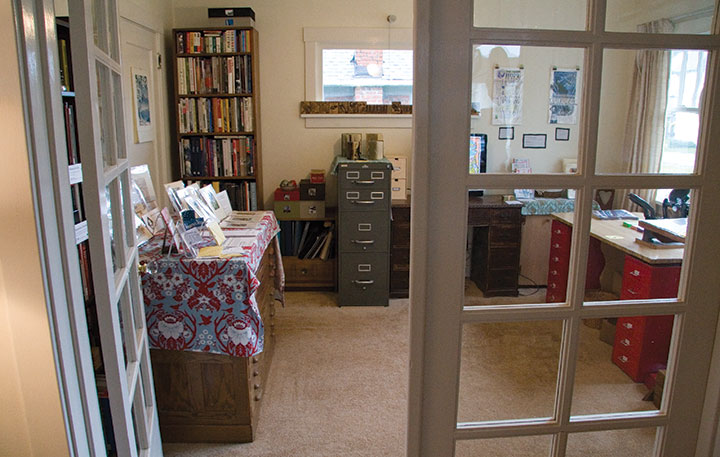
Yowsa! When Tacomans say they’re into art they’re not kidding. Despite absolutely horrendous weather, we had 130 visitors to the studio this weekend! (Hmm…which, oddly enough, is almost exactly the square footage of the space. This is how things looked before that first knock on the door Saturday.)
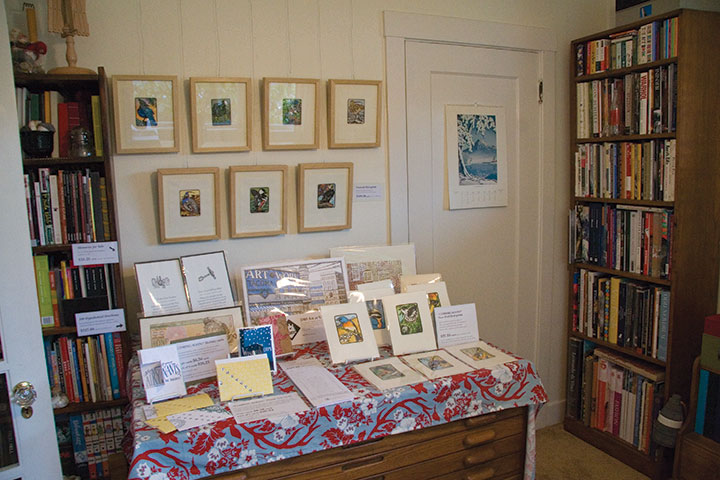
So a vast, colossal thank you is in order for all of you who braved the downpour and jet-propelled ice pellets to get here, and then shoehorned yourselves into the studio to order prints, start a subscription, get your hands dirty on press, or just say hello (sorry the Tailor’s fabulous cookies ran out so quickly). Friends stopped by for a quick hug, gaggles of kids discovered the joys of printing, and one person immediately ran out and bought her own Kelsey press that very same day (you know who you are!), courtesy of Tacoma’s Antique Row. Lots of people returned the second day, and I lost count of all the newcomers and fresh faces. Everybody came with intelligent questions and thoughtful insight, and I’m just overwhelmed by all the kind words of welcome and encouragement. And as if that weren’t gratifying enough, when we finally closed up shop on Sunday, everything was just as tidy as it was on Friday night—no mud tracked in, no prints out of place, no ink straying beyond the demo table. You people are amazing! Sign me up for next year.
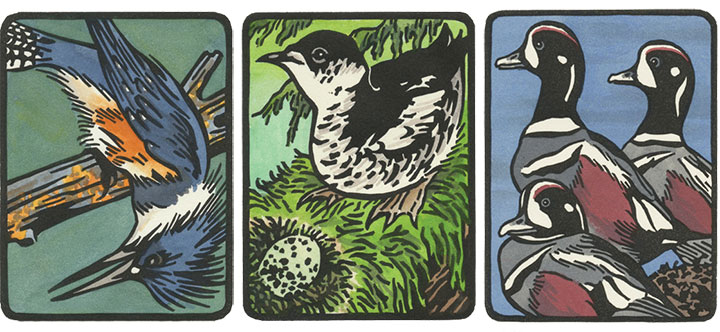
In the meantime there’s still quite a lot of finishing-up to do before the holiday rush consumes my brain (I’m still not over the weird sensation of being on the other end of holiday retail). I’m going to hold onto Marie Curie until Thursday so I can tie up some other loose ends first, so look for it online then.
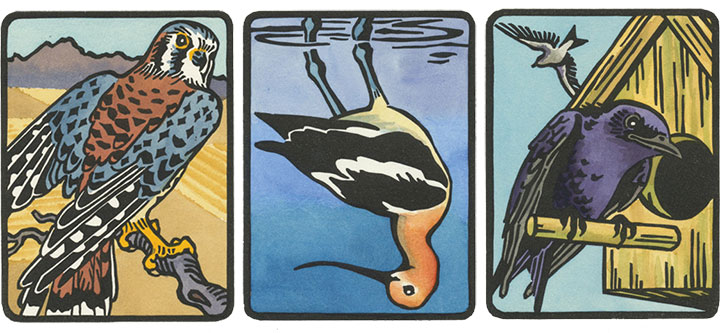
For now, here’s a quick peek of the new birds that were unveiled this weekend. I’m still finishing up the editions (you should see my little watercolor assembly line), so if you placed an order at the studio tour, I’ll be contacting you in the next couple of weeks.
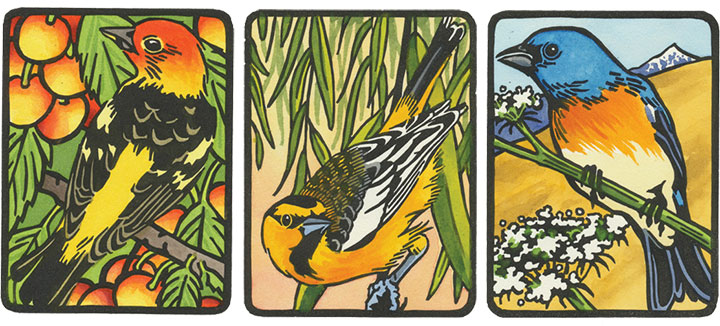
If you’re local but you missed out on the tours this weekend, these little guys will be available at the next Tacoma is for Lovers Craft Fair, held at the inimitable King’s Books on Sunday, November 22, from noon to 5 pm. And for the online world, I’m posting them one-at-a-time, every couple of days in the Etsy shop—just so I don’t get too far ahead of myself!
November 5th, 2009
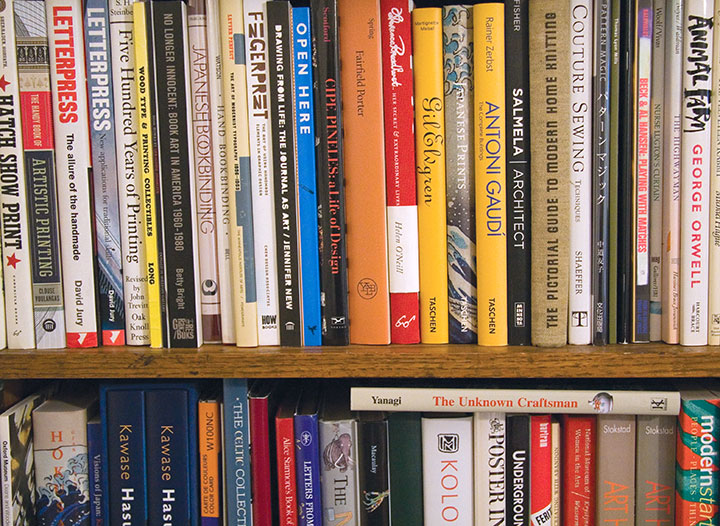
One of the biggest highlights of Tacoma’s annual Art At Work Month is the huge, city-wide Studio Tour circuit, when artists of all stripes (painters, sculptors, printers, photographers, dancers, weavers, jewelers, glassblowers, etc.) open their work spaces to the public and share their processes and products. This year (the eighth year of the event!) there are 39 stops on the tour, and yours truly is joining in on the fun.
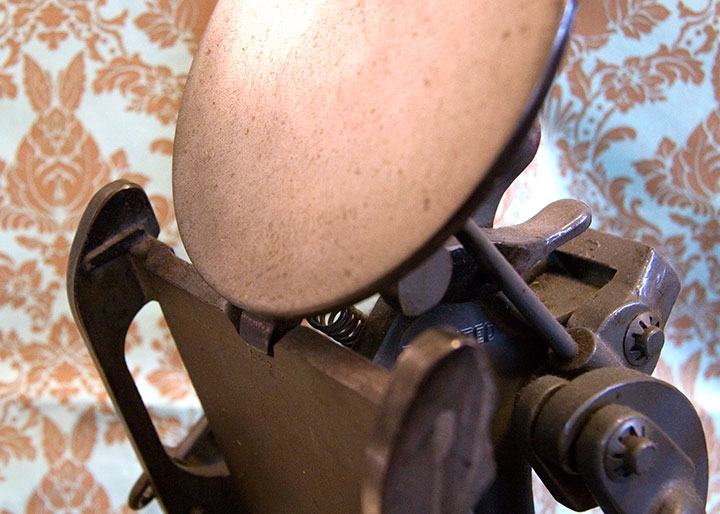
I’ll be firing up the little Kelsey press, so stoppers-by can print their own keepsake and catch the letterpress bug (watch out, it’s contagious!),
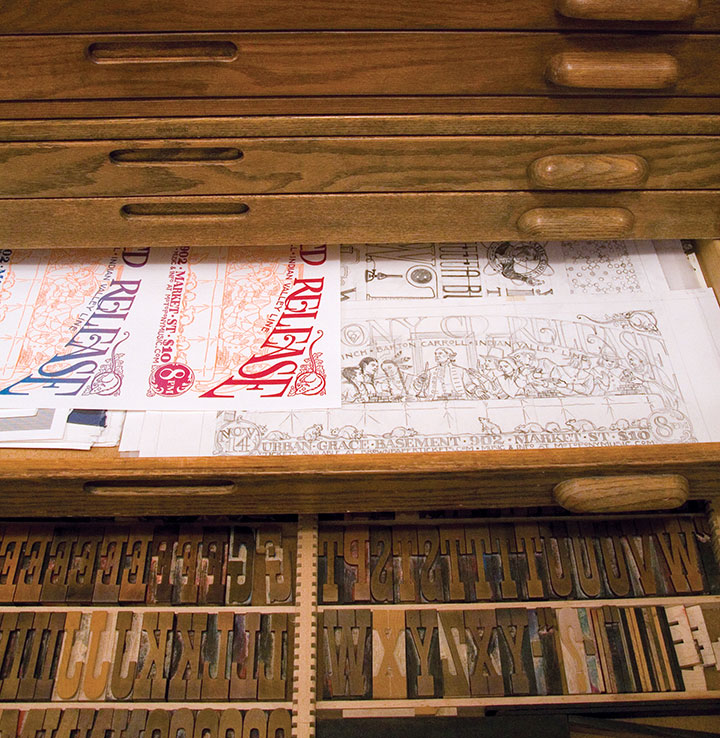
and I’ll have lots of sketches, layouts, tools, and other process materials on display. This is the best part for me, since letterpress and artist books always bring up a lot of questions, and this time I’ll have plenty of visual aids at hand.
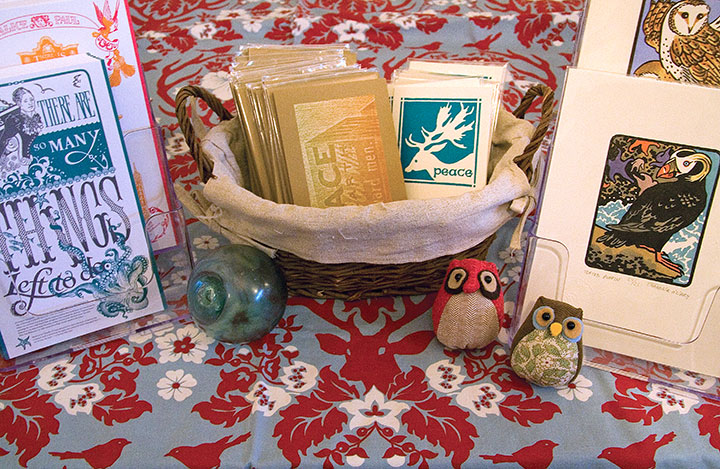
(Stuffed owlets by Mirka Hokkanen, another studio tour artist!)
And since the holidays are just around the corner (or already here, if you believe the Christmas muzak blaring at the grocery store; I proudly promise that Anagram Press will be a carol-free zone), there will be all kinds of goodies for sale, including a boatload of brand-new items. I’ll have copies of the Art At Work poster, a preview of nine (!) new bird prints and several holiday card designs to pre-order, and the unveiling of the newest Dead Feminist broadside. Jessica and I are featuring Marie Curie and the issue of health care this time—but that’s all we’ll share for now. Look for photos and details online next week, but if you want a head start and first pick, you’ll have to come to the tour!
Jessica will be on the tour circuit, too, at her magnificent studio Springtide Press—where she’ll be manning the Vandercook, churning out all kinds of surprises.
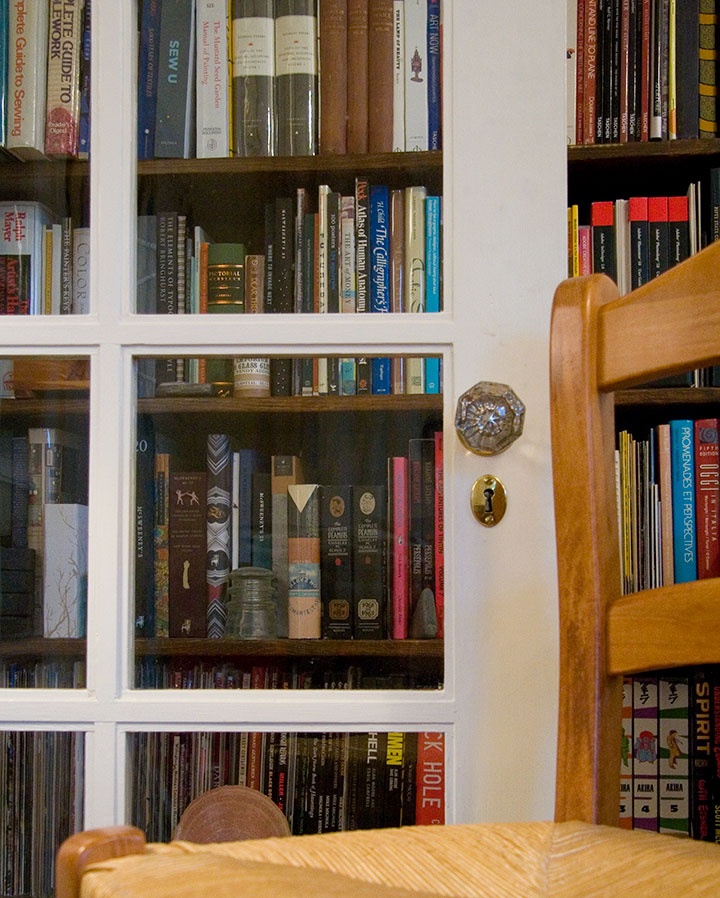
So grab an umbrella, ’cause it’s going to rain (are you surprised?), and take a walk around the neighborhood—Anagram Press and other participating studios will be open from 10 am to 4 pm, this Saturday and Sunday, November 7 and 8. And best of all, the event is free and open to everyone! This is my first time participating in the Studio Tours (Alec Clayton from the Weekly Volcano included me in his list of “must-see studios,” so now I’m officially nervous), so please bear with me while I work out the kinks of hosting a hundred or so guests in my little space—I’ll do my best not to run out of munchies or keepsakes. Come on by and say hello.
November 2nd, 2009
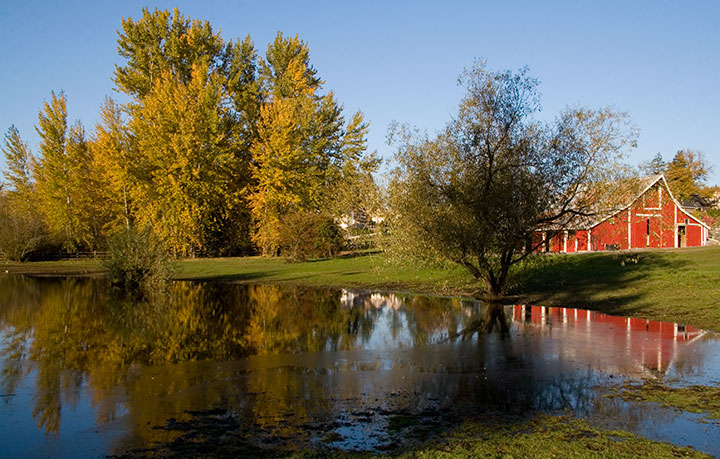
Sunny days are getting fewer and farther between around here, and Mt. Rainier is M.I.A. more often than not. So the gorgeous weather and the threat of an early nightfall (thanks to the end of Daylight Saving Time and living at 47.25° N latitude) were enough to coax me out of the studio and into the car, in hopes of capturing another image for my book.
As far as research goes, the day was a total bust (the Mountain was glorious; I just couldn’t find the right vantage point), but I did come away with an expanded mental map and one good shot.
October 27th, 2009
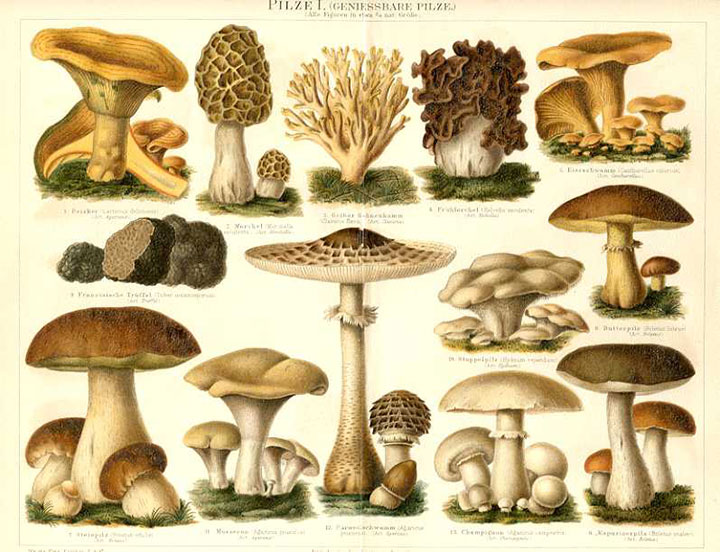
Now that we live in a vacation destination, we tend to get a lot of out-of-town visitors. We have a list of favorite places to take first-timers, so we can often be found at places like the Pike Place Market, Point Defiance, and Mt. Rainier with house guests in tow. When a pair of French foodies arrive on your doorstep, however, it’s a whole ‘nother ballgame. Our friends Gilles and Jean-Philippe had just one major request for their visit last weekend: mushroom hunting. Since it’s chanterelle season and the weather was good, Saturday seemed like a good day to lace up our hiking boots and grab our pocket knives.
Disclaimer! The Tailor and I are not experienced mushroom gatherers, so we’d never try this on our own—incorrectly identifying edible fungi is not a mistake one wants to make. Even the most detailed books can’t replace the presence of a skilled guide, so if you don’t have your own French mycophile on hand to take you hunting, skip the risk and buy a bag of chanterelles at the farmers market!
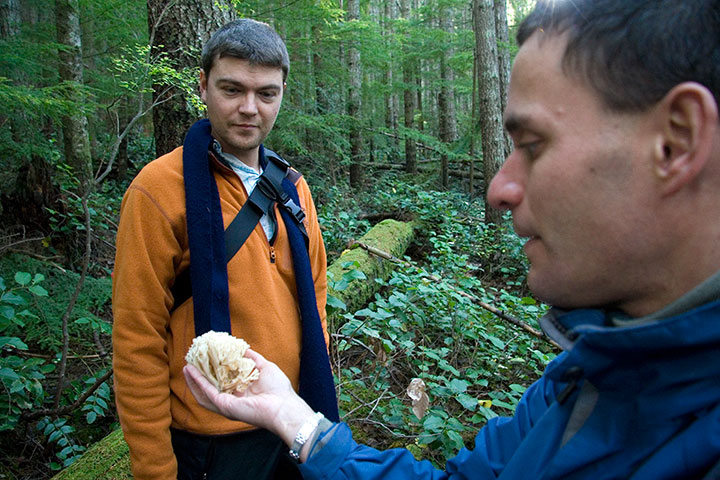
As far as dinner ingredients go, we came away empty-handed—the conditions just weren’t right. But as a crash course in the sheer diversity of local fungi, it was a spectacular day; we found several dozen different varieties ranging from beautiful to bizarre; delicate to disgusting.

We did find a few edible species (these orange peel cups were a beautiful and exciting highlight), but nothing worth turning into a meal. So the day turned out to be more of a scientific field trip—certainly a worthwhile adventure in its own right.
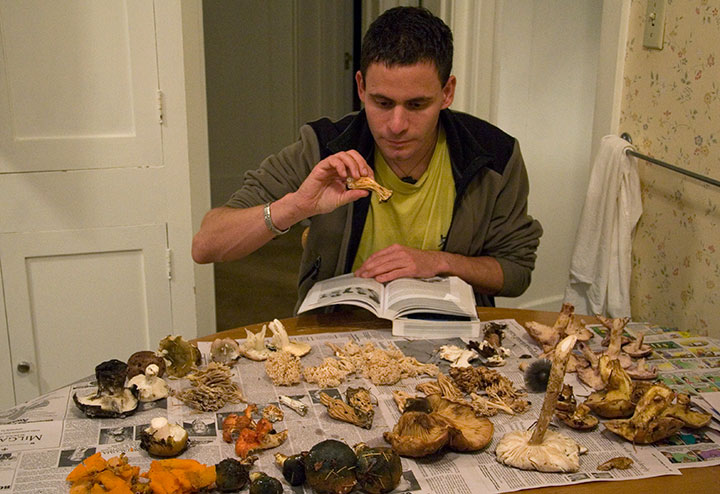
When we got home, Gilles spread out our haul and set to work identifying, making us laugh whenever he called out something strange (stinkhorn, elfin saddle, hedgehog—called sheep’s foot or pied-de-mouton in France).
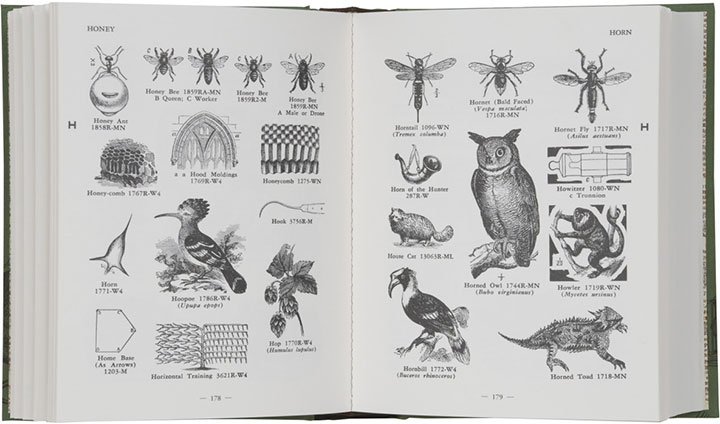
As for me, all this mushroom-naming reminded me of the newest addition to my reference library: the stunning Pictorial Webster’s, by book artist John Carrera (for a mind-blowing art experience, check out the video on the process behind the book here). So I took a page out of his book (sorry, I couldn’t resist), and did a little visual taxonomy of my own.
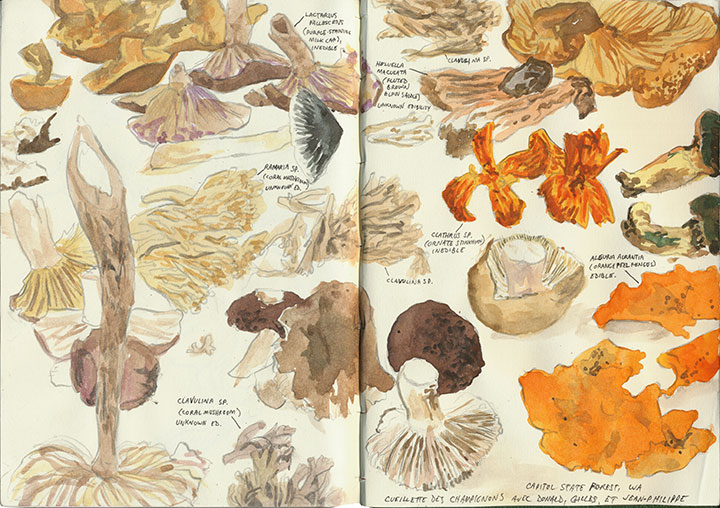
Jean-Philippe, meanwhile, had the best idea yet: purchasing a pound or two of fresh chanterelles, and putting his mad French cooking skills to work. The sumptuous champignons dish he whipped up disappeared into our mouths long before I thought to grab the camera, but I did remember to ask for the recipe:
Chanterelles à l’improvisation
– 1 1/2 pounds fresh chanterelle mushrooms, halved
– 1/2 cup bacon (3 slices or so)
– 1 medium yellow onion, chopped
– 4 to 5 Tbsp olive oil
– 1/4 cup dry white wine (the Muscadet we had on hand was great)
– dry parsley to taste (fresh is better, but we didn’t have any)
– salt and pepper to taste
Brown the bacon until crisp, then break into small pieces. In a separate, large pan (so as not to overpower the mushrooms with the flavor of bacon fat), sautée the onions in olive oil over medium-low heat until lightly browned. Add the chanterelles, bacon, salt, pepper, and white wine, and sautée until the mushrooms are slightly limp and drained of most of their water content (oh, say 5 or 6 minutes). Season with parsley at the very end, then serve either alone or over brown rice. Watch the dinner conversation devolve into a series of satisfied grunts.
October 22nd, 2009
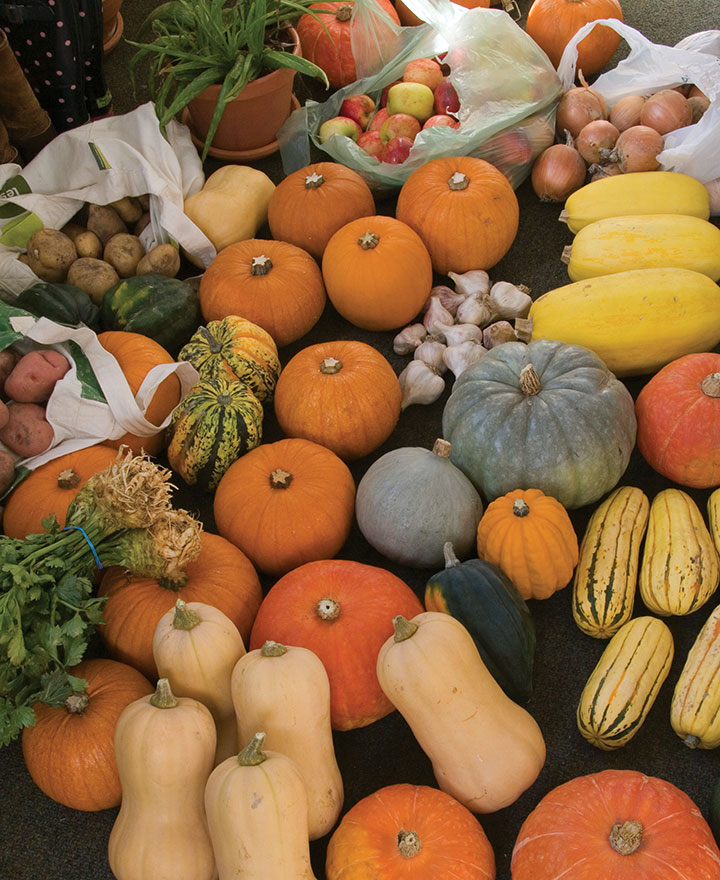
If you had seen our back porch last weekend, you’d probably think we were starting our own farmers market. But this is a typical sight for many seasonal foodies like us; when you swear off strawberries in January, you need enough fresh autumn fruits and veggies to last you until the end of April (notwithstanding my usual February freak-out where I cave in to a craving or two for salad).
We still have quite a ways to go yet, but we’re working hard to fill our root cellar, attic, freezer and pantry shelves with a wide variety of staples and goodies to keep our winter diet interesting. Here’s what we’ve got so far:
In the root cellar:
– 20 lbs. onions
– 10 lbs. apples (still need 2 bushels)
– 10 lbs. potatoes (still need at least 80 lbs., plus a bushel of carrots and parsnips)
– 9 bottles of wine
In the freezer:
– 4 lbs. locally cured, nitrate-free bacon
– 5 whole, local “Rosie” chickens
– various cuts of local, organic meat
– various cuts of venison, provided by my father-in-law
In the refrigerator:
– 5 lbs. fresh cranberries (for canning; more to come)
– 2 or 3 red cabbages
– 6 or so honeycrisp apples (which don’t keep long but are my favorite kind)
– 1 bunch celeriac root now in my belly—yum!
– 1 lb. garlic
In the pantry:
– 25 lbs. rolled oats
– 5 lbs. steel-cut oats
– 10 lbs. coarse-ground grits (not local, obviously, but the mill is definitely a mom n’ pop operation)
– at least 6 different kinds of rice
– 30 lbs. sugar (mostly for canning)
– 3 quarts local, single-source honey
– 15 or so different varieties of loose-leaf tea
The Tailor’s 2009 home preserving yield to date:
– 5.5 quarts dried blueberries
– 6 pints blueberry syrup
– 5 pints canned whole blueberries
– 9 pints blueberry jam
– 9.5 pints blackberry jam
– 8.5 pints raspberry jam
– 6 pints strawberry jam
– 15 pints canned heirloom tomatoes
– 16 pints tomato sauce
– still to come: apple butter, apple sauce, cranberry sauce, chicken broth
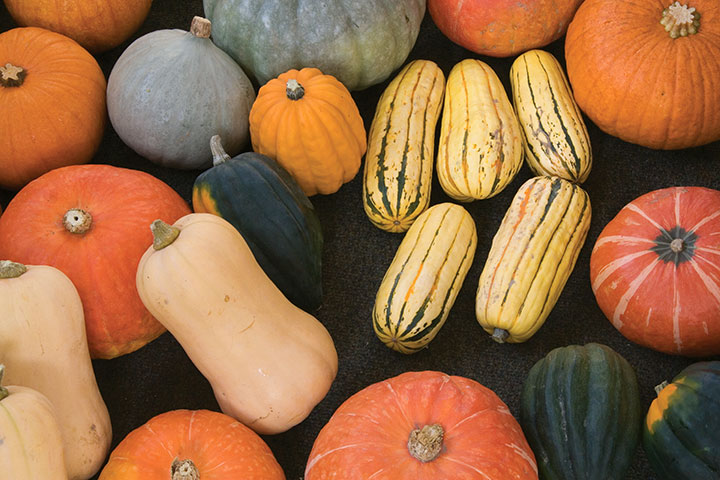
And then there’s the winter squash in the attic: one of my favorite parts of the season, and of living and eating in the Pacific Northwest.
In the attic:
– 14 sugar pie pumpkins
– 8 kabocha squash
– 7 delicata squash
– 6 carnival squash
– 7 acorn squash
– 6 butternut squash
– 3 spaghetti squash
– 1 mini hubbard squash
– 1 jarrahdale pumpkin
Okay, we might have gone a little overboard on the squash, but I never get tired of it, and it’s an important staple of a seasonal diet. We keep these babies in the attic because they last much longer there—pumpkins and squash prefer a cool, dry environment to the cool humidity of the cellar. Our squash colony is a big conversation piece, and we get a lot of questions about pumpkin storage, so I’ll share the scoop:
First, choose squash and pumpkins with intact stems—those that have had their stems snapped off won’t last long. Next, make sure your squash was harvested before the first hard freeze; post-freeze specimens rot fast. Check around the stem and on the bottom end for any mold, rot, blemishes, damage, or sogginess. Now it’s time to sock them away—an attic is best, but anywhere that’s cool, dry and dark will work fine (but never let them freeze! During a cold snap last year we had to haul them all down into the living room when the attic hit 32 degrees!). Don’t stack your squash; just like apples, a rotten squash can infect any neighbors it touches. Instead, we make little “nests” for them by crumpling up newspaper and cushioning each one individually, in a single layer. As long as they’re unblemished and in good shape, and stored carefully, many varieties will last until at least March. Spaghetti squash will often keep until April, but sadly, butternut (my absolute favorite) tends to have the shortest lifespan. So eat those first, and relish every bite.
I feel like a little pumpkin pie. How about you?
October 17th, 2009
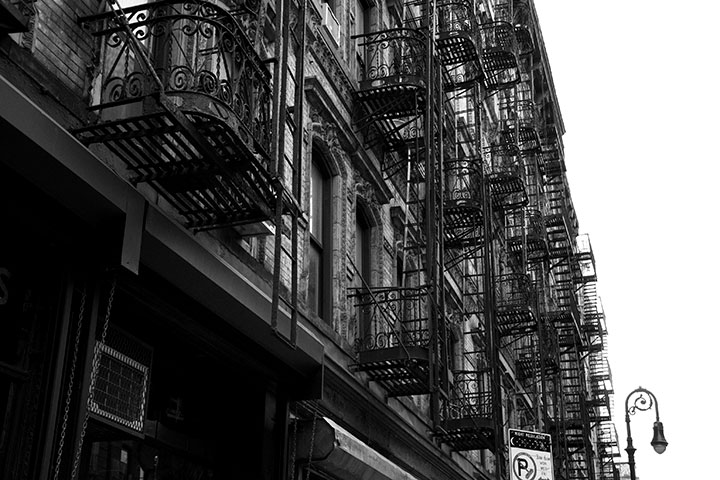
Last week I spent a few days in New York for the wedding of some dear friends.

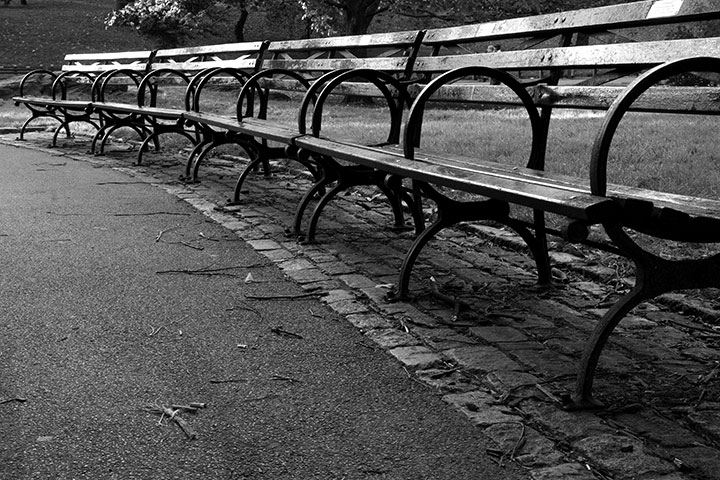
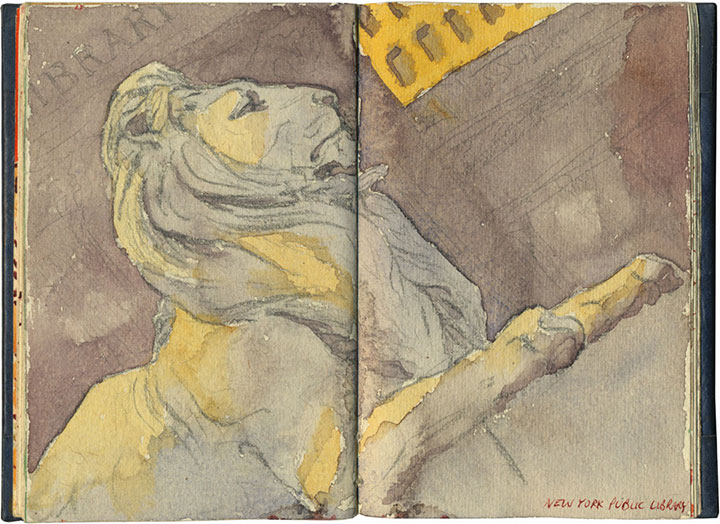

I lost track long ago of just how many trips I’ve made there over the years, or how many months’ residence would equal the sum of all my days spent there (plenty).
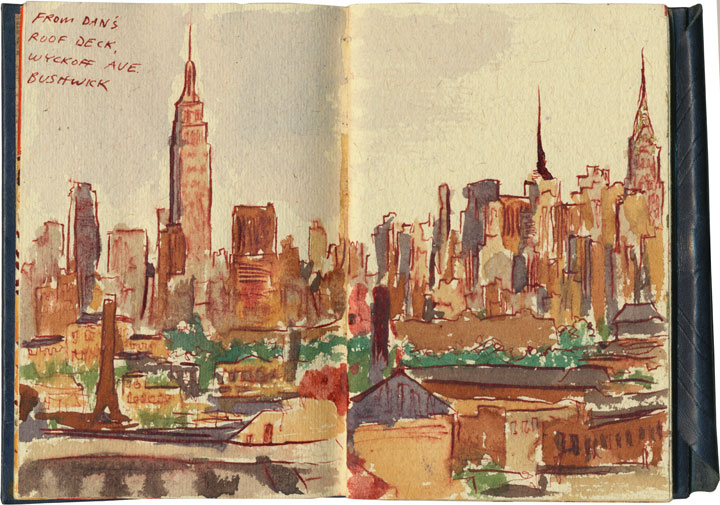
My memories and souvenirs reflect this. I have whole sketchbooks devoted solely to Manhattan; boxes of still-good Metrocards and train schedules; miles of film negatives and a mental Rolodex stored to the brim with makeshift maps, habitual errand circuits and addresses of favorite haunts.
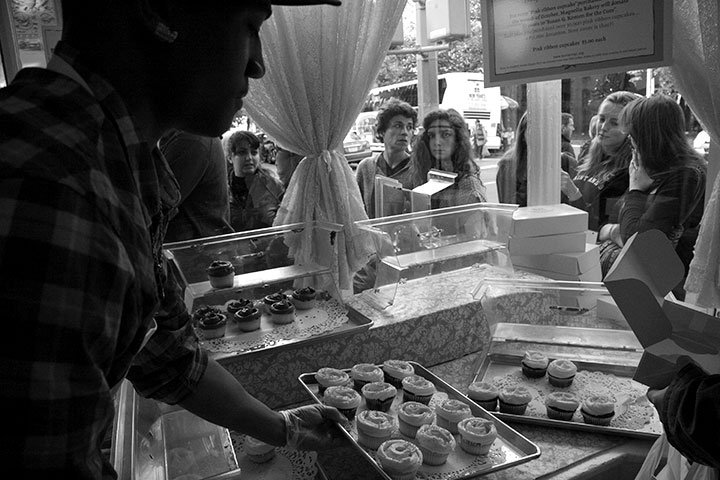
Every time I visit, it’s hard to string together a cohesive narrative of the adventure afterward.
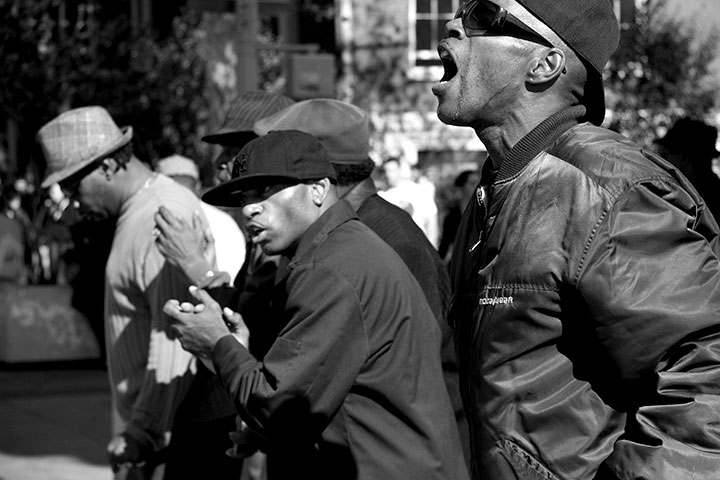
Instead, my memories of New York are always a series of brief impressions; moments caught like fireflies in a jar.


Maybe it’s because each day finds me all over the map of the city, alternately in teeming crowds and completely alone;

or because I’d rather remember the best events and forget the worst (I’ve got a whole long list of those, too);
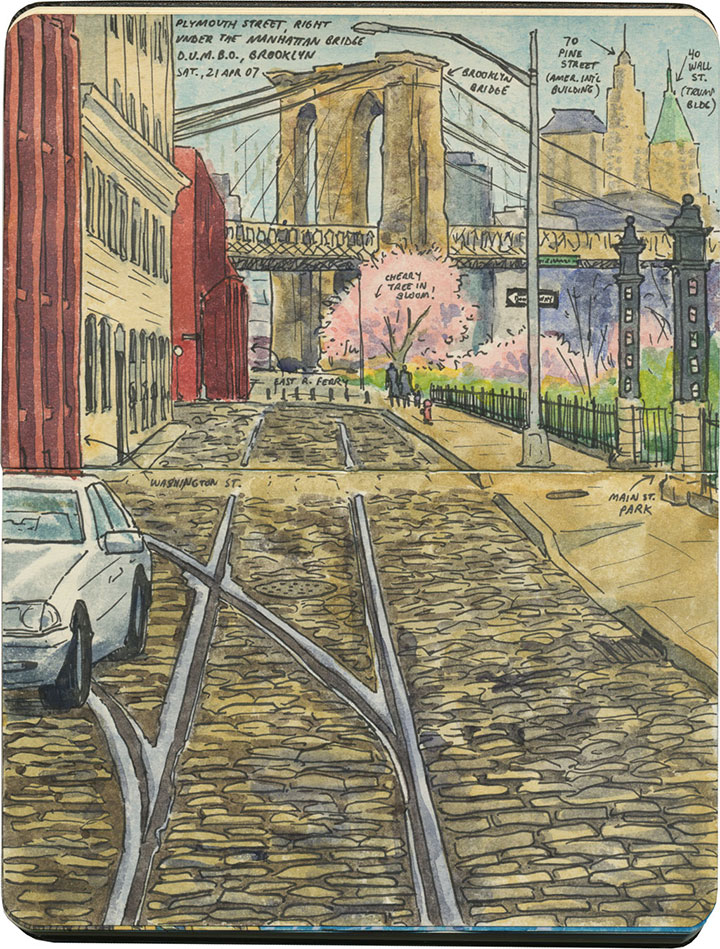
or maybe I owe it to the very nature of drawing and photography—whatever the reason, this trip was no different.
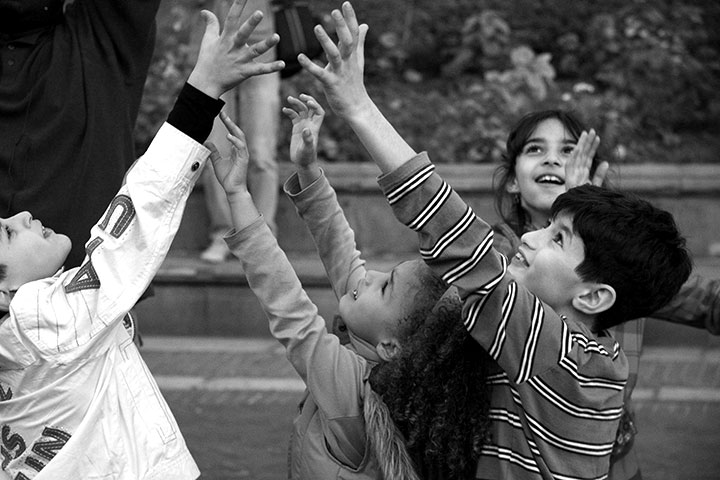
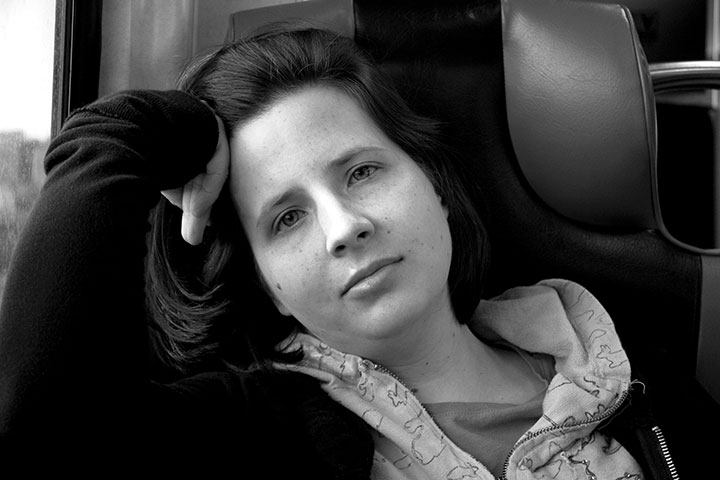
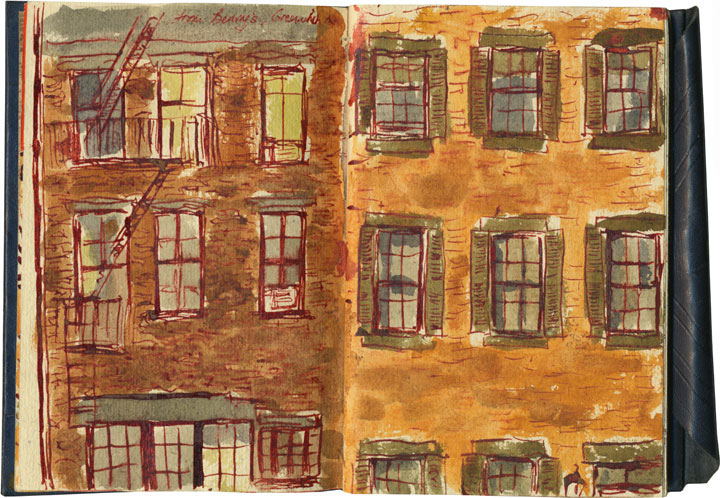
And every moment is another thread woven into a huge, neverending tapestry that tells the story of my very own, personal New York.
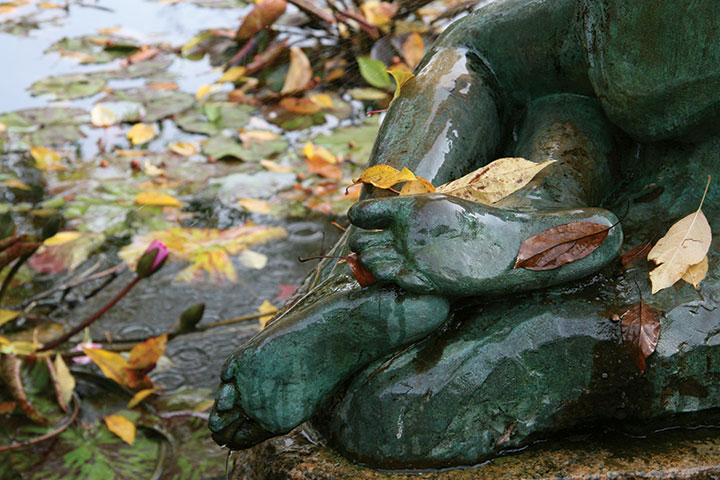
And for me, that’s the best thing about it.
October 14th, 2009
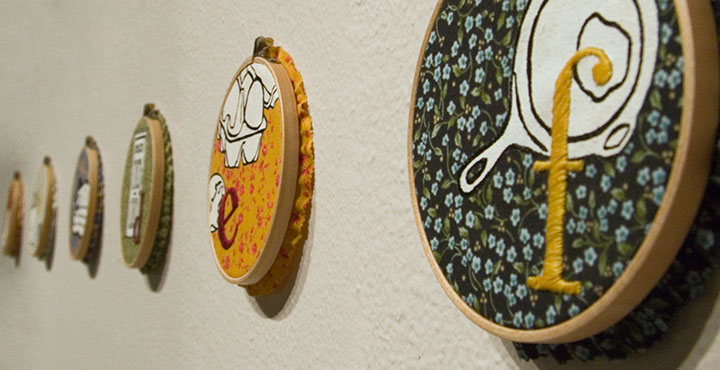
When I walked into the PLU Gallery this morning to document the Mnemonic Sampler show when it opens, my brain had somewhat of a short circuit. Since I was out of town for the past few days, all of the installation work was done for me (thank you a million times over, Heather C.!)—so this was the first time I’d laid eyes on the work since framing it up and chucking the pieces in a box. I somehow couldn’t connect the finished work on the walls with the crazy, chaotic process of the past few months. It seemed so simple, like this was somebody else’s show, and all the nail-biting and never-ending futzing I’d been doing was for some other project that would remain unfinished forever. But I did finish it—and there it is!
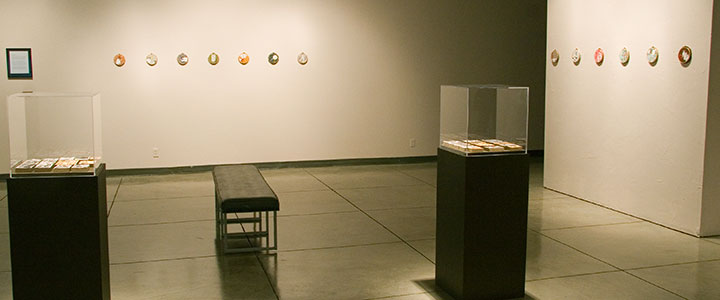
I was nervous about the possible absurdity of having twenty-six small pieces in a colossally huge space, but somehow, it works. Heather ingeniously used lighting and visual breaks to transform the gallery into a space that draws the viewer in and creates an intimate experience—which is exactly what I hoped for. Heather, I owe you big.
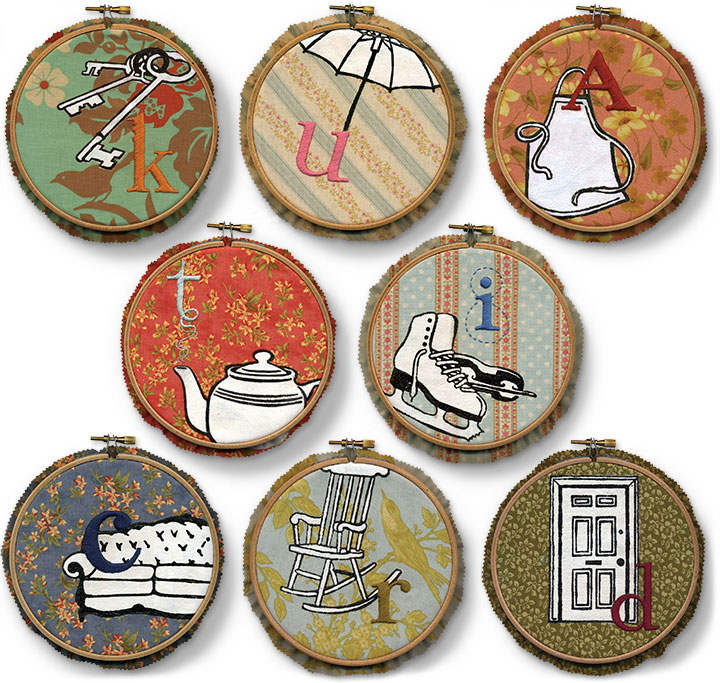
On to the work itself. Here is the artist statement for the exhibit:
The alphabet is one of the first lessons we learn as children. From the beginning we learn to use it as a mnemonic device—just like “Roy G. Biv,” or “Every Good Boy Deserves Fudge”—assigning meaning to our world by associating symbols with each letter. Because the alphabet is one of our most basic and effective memory tools, we are drawn to it as both a visual and narrative archetype. It’s not surprising, then, that the abecedary is somewhat of a staple among book artists.
Just as we use our ABCs as a memory aid, our possessions help us create the concept of Home. No matter what our economic station, living situation, or domestic permanence, we all tend to share similar symbols of comfort and nostalgia. These ideals are embodied in the everyday objects around us—those mundane materials we take for granted, yet without which we would sense something lacking. As someone who has never had a picket fence, who grew up in a nomadic military family, and who has lived her entire life with relatively few possessions, the archetypal Home should seem foreign to me. Yet the same mnemonic triggers exist in my mind; the same objects attract me.
Mnemonic Sampler collects and files our household icons, gathered together like the stitched and quilted samplers of our mothers and grandmothers. The hand-stitched alphabet enumerates my, your, our trappings, shuffling our collective domestic inventory like the old card game of Memory. Each symbol is familiar; each object is Ours, whether we actually possess it or not. Together they sketch out a Home—real or imagined; longed-for or spurned; past, present, or future.
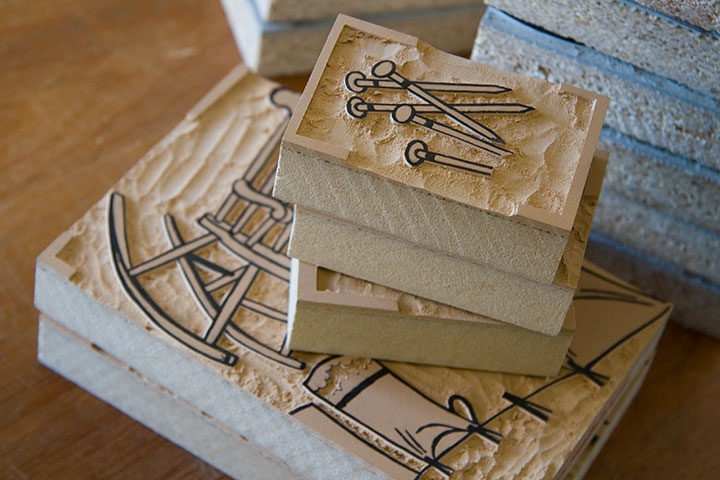
Mnemonic Sampler is a collection of monoprints, which means that instead of an edition of multiples, each print is created in such a way that it can’t exactly be reproduced. This technique results in a one-of-a-kind, totally unique piece—and is often more closely related to painting than printmaking. These pieces are printed from reduction-cut linoleum blocks—meaning both print colors are carved from the same block.
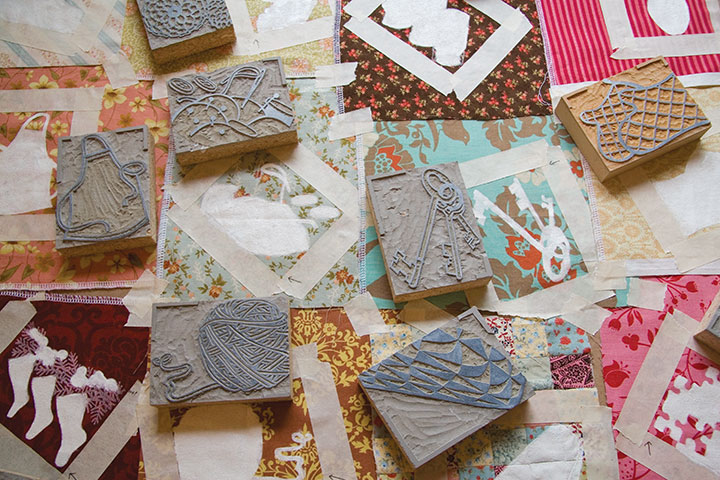
So once the second design is carved, the first color cannot be printed again.
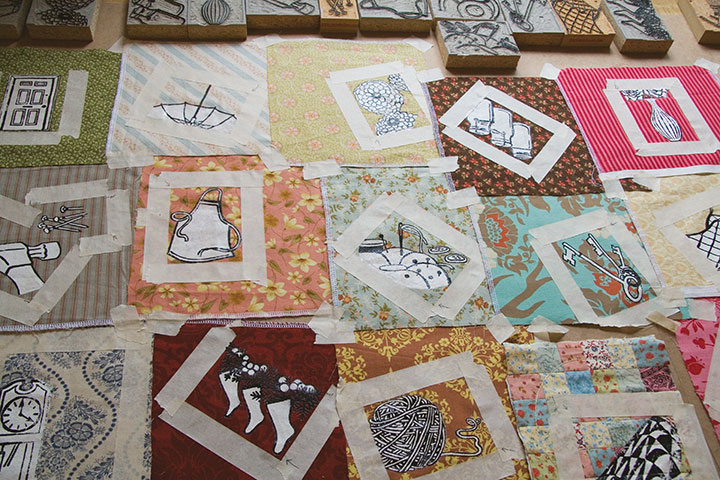
Designing these pieces was an intuitive process, consisting of both logical and intangible choices of fabric and pattern compositions. Because the design stage was so fluid (almost semi-conscious at times), it really wasn’t possible to do the printing on a press. Instead, each impression was made literally by hand, using masking tape to aid in color registration.

“Q” has an extra conceptual level, since the fabric background is a patchwork “quilt” in its own right. Like everything else about the series, the patchwork is sewn by hand, using the English paper piecing technique.
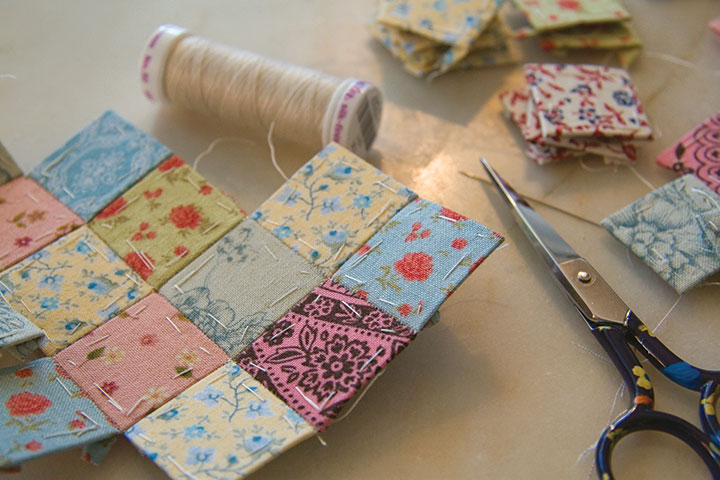
This was my first attempt at paper piecing, and I’m pleasantly surprised at how quick and accurate it is. Instead of folding and ironing every tiny piece, then wrangling a sewing machine, each patch is wrapped around a paper template and basted down, then whip-stitched together into a block.
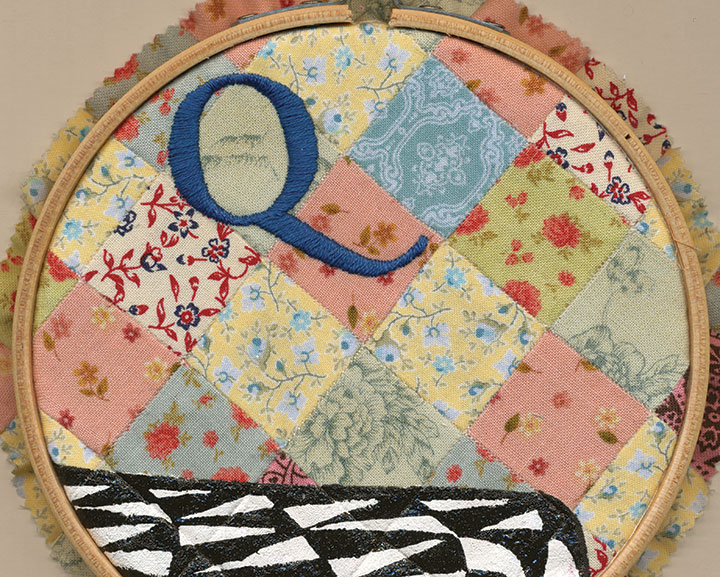
The result is a precise little quilt—perfect for embroidery.
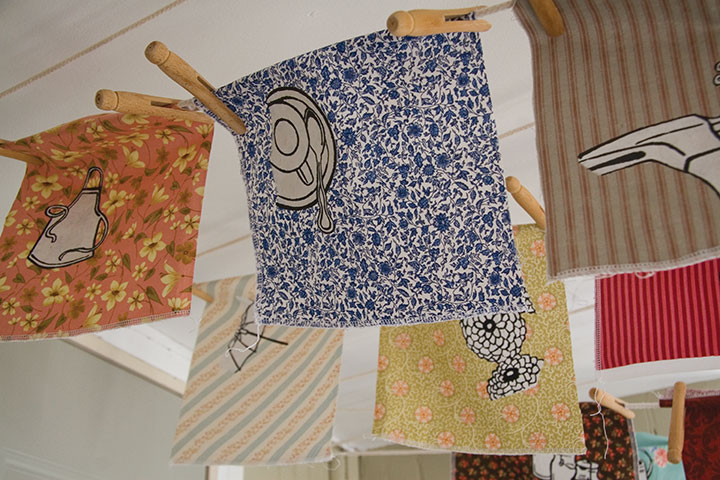
I can’t believe how long it took to complete every step of the process—and yet how quickly everything came together at the end. So you can bet I’m excited about celebrating at the opening tonight. And besides, I’m interested to see if the household objects I chose will resonate with viewers; it wasn’t easy to narrow things down to twenty-six letters of the alphabet, so I picked those objects that had the most meaning for me.
So how about it—what spells “Home” for you?

![Chandler O'Leary [logo]](https://chandleroleary.com/wp-content/themes/chandleroleary/images/logo.png)


















































